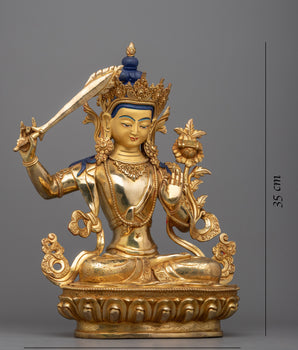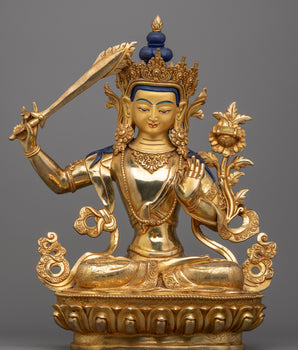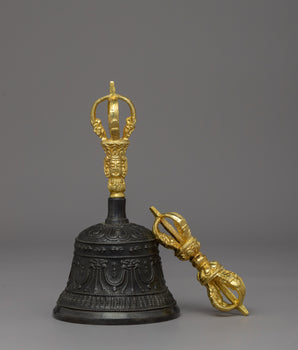













Iron Tibetan Phurba Dagger | Powerful Tibetan Ceremonial Tool
Ritual Iron Tibetan Phurba Dagger | Spiritual Tool for Protection and Meditation
--------------------------------------------
Size: 47cm (Height) x 15cm (Width)
Weight: 2.54kg
Materials: Iron Body
--------------------------------------------
About The Ritual Item :
With this finely crafted iron Tibetan Phurba, a ceremonial dagger used in Vajrayana Buddhist ceremonies to remove negativity and transform iron-made spiritual energy, you can invoke the ancient strength and sacred protection of Tibet. This Phurba is made entirely of iron, giving it an intimidating appearance. It measures an excellent 47 cm in height and 15 cm in breadth. The Phurba, a potent spiritual instrument used in ceremonies, meditation, and rituals, has long been employed by monks, shamans, and tantric practitioners. It represents the slicing through of ignorance and ego.
This enormous Tibetan Phurba dagger, which weighs 2.54 kg, is perfect for conspicuous exhibition in temples, meditation halls, or individual shrines. The detailed carvings include a three-sided blade, lotus designs, and angry god faces—all of which have deep symbolic significance. In addition to giving it a striking, realistic appearance, its iron body amplifies the energetic qualities linked to power, grounding, and divine protection. This Phurba represents the ferocious compassion of Vajrayana teachings, whether it is utilized in ceremony or as a piece of sacred décor.
Spiritual practitioners, Buddhist artifact collectors, and anyone seeking strong ceremonial implements will love this handcrafted iron Tibetan Phurba. Your listing attracts people seeking genuine and transformative spiritual tools, utilizing keywords such as iron Tibetan Phurba, large ceremonial dagger, Buddhist energy-clearing tool, and Vajrayana altar décor. Allow this iron Phurba to become the focal point of your sacred space's ritual power and protection.
Introduction To The Phurba :
The ceremonial dagger (Sanskrit: Kila; Tibetan: phurba) is essential for expelling evil and is considered particularly effective in neutralizing the forces obstructing Tantric Buddhist practice. It has ancient origins, first appearing in the Indian Rig Veda as the core blade of the vajra used by Indra to destroy the primordial cosmic snake Vritra. Kila, derived from Sanskrit, was most likely associated with Vedic sacrifices. Meditation on the Vajrakila Tantra, an early Indian scripture first promoted in Tibet in the eighth century by Padmasambhava, one of the founding teachers of Tibetan Buddhism, is used to invoke the three-headed Vajrakila Buddha.
How to Set Up Your Buddhist Shrine?
Find a clean, quiet, and uncluttered spot.
Please set up an altar table and cover it with an altar cloth that calls to you.
Place your sacred item (statue, thangka, or a picture of Buddha) at the center.























